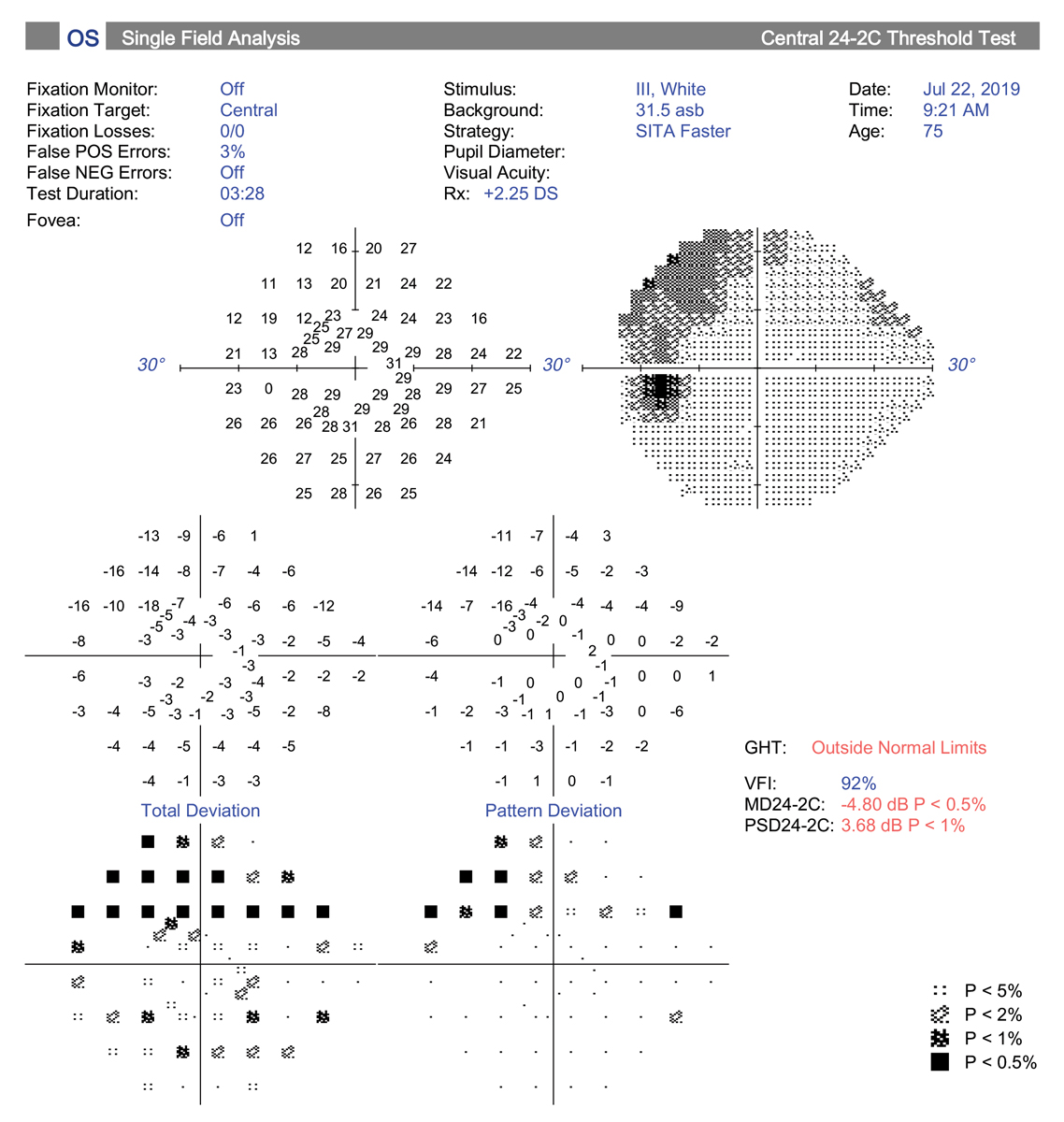 |
| The new SITA-Faster protocol shortens test time, allowing the option of retesting at the same visit. Photo: Michael Chaglasian, OD, and Sarah Klein, OD. Click image to enlarge. |
Patients often perceive visual field tests as the least desirable part of the glaucoma assessment, but perimetry is necessary for detecting functional disease progression. This leaves many questioning whether performing multiple visual field tests within the same clinical visit is practical. Jack Phu, OD, PhD, of the Centre for Eye Health at the University of New South Wales in Australia, believes this is manageable. He and other researchers have found that so-called front-loaded visual field testing (twice per eye per session) can be implemented in routine clinical practice to capture enough clinical perimetry data for effective disease diagnosis, surveillance and management.
“As clinicians, we aim to get the most accurate and useful data for making the best decisions for our patients,” he says. “This approach using SITA-Faster has been shown to provide advantages to clinicians in having lots of data available to make a clinical decision.” Since SITA-Faster takes roughly half as long to administer as SITA-Standard, the front-loaded patient experience can match the older protocol while giving the practice twice as much data, the researchers argue.
Dr. Phu and his team recently surveyed glaucoma patients/suspects (n=138) and their technicians (n=31) and found that the majority of respondents tolerated the front-loading process very well. The questionnaire was administered after static automated perimetry (24-2 SITA-Faster on the Humphrey Field Analyzer) was performed twice on each eye within the same session.
Approximately 90% of patient respondents agreed that this visual field testing protocol was clearly explained to them, they were comfortable during the test and they prefer completing the tests at a single visit rather than returning to repeat the test.
Most technicians noted that they were also able to keep their patients comfortable, but 13% of the respondents felt that they ran late during the session. On average, the total test duration for four visual field tests was 13 minutes, including rest breaks that the patients tended to appreciate.
The study did not examine patients who may have had difficulty with visual field testing, such as those with cognitive decline, poor dexterity and poor understanding of the task. The researchers believe that frontloading fields in such patients would not necessarily be beneficial, as their inability to conduct the test may not be a product of the specific test algorithm but would most certainly negatively impact results.
“The present results show that implementing front-loaded visual field testing was successful in the clinic from the perspective of patient and technician feedback,” the authors of the study concluded. “Given the importance of increased visual field testing for detection of glaucoma progression and conversion, this technique can be applied across the spectrum of glaucoma disease, from suspects to its advanced stages.”
| Phu J, Kalloniatis M. Patient and technician perspectives following the introduction of frontloaded visual field testing in glaucoma assessment. Clin Exp Optom. August 17, 2021. [Epub ahead of print]. |


